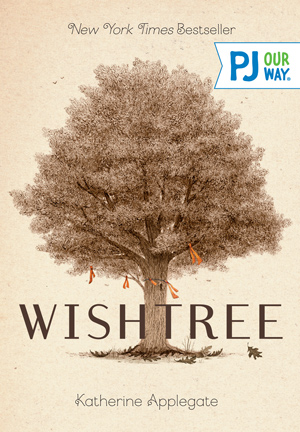Wishtree
Red is a wise, philosophical, and funny old oak tree who has watched over his neighborhood for hundreds of years. He’s seen it all, but that’s about to change.
Average Rating
( hint: Login to leave a review! )
316 Reviews
Leave Review
What the Book Is About
Jewish Content & Values
Positive Role Models
Content Advisory
Talk It Over
More for You
What the Book Is About
When gentle Samar moves into the neighborhood, she befriends the tenants of Red, a northern red oak tree: an opossum family, a skunk family, and Red’s best friend, a crow named Bongo. But when someone carves a mean word on Red’s trunk, everything changes. Narrated by Red, otherwise known as Wishtree, this beautiful story of dreamers, friendship, and nature will charm readers young and old.
Jewish Content & Values
- “Don’t oppress or mistreat a foreigner, for you were once strangers in the land of Egypt” (Exodus 22:21). Jews are no stranger to ethnicity-based discrimination, and Samar’s family is made unwelcome in their new home because of their ethnicity.
- This book is a special selection in honor of the Jewish holiday of Tu B’Shevat, the Jewish Arbor day, the new year for trees.
Positive Role Models
- Red is a wise old oak tree who watches over his animal tenants and human friends.
- Stephen is a good and loyal friend. He organizes a wish-writing campaign to make Samar feel welcome at school and in the neighborhood.
Content Advisory
None.
Talk It Over
Red is a wishing tree and people come from all over the neighborhood to hang wishes on his branches. Visitors to the Western Wall (the Kotel) in Israel come from all over the world to pen a prayer and push it between the cracks of the stones. If you were to visit the Wall, what would your prayer say?
More for You
Trees are valuable resources in Jewish tradition; in fact, the Torah is often referred to as “the tree of life.” Uprooting a fruit tree, for any reason, is generally discouraged in Jewish law. The law of Orlah states that during the first three years, it’s forbidden to harvest a tree’s fruits for consumption, directing all the tree’s resources towards strengthening its roots and branches for a long and healthy life. There is even a special blessing over witnessing the first flowering for fruit trees: “Nothing is lacking from God’s world and He created good trees for the benefit of man.”
What the Book Is About
What the Book Is About
When gentle Samar moves into the neighborhood, she befriends the tenants of Red, a northern red oak tree: an opossum family, a skunk family, and Red’s best friend, a crow named Bongo. But when someone carves a mean word on Red’s trunk, everything changes. Narrated by Red, otherwise known as Wishtree, this beautiful story of dreamers, friendship, and nature will charm readers young and old.
Jewish Content & Values
Jewish Content & Values
- “Don’t oppress or mistreat a foreigner, for you were once strangers in the land of Egypt” (Exodus 22:21). Jews are no stranger to ethnicity-based discrimination, and Samar’s family is made unwelcome in their new home because of their ethnicity.
- This book is a special selection in honor of the Jewish holiday of Tu B’Shevat, the Jewish Arbor day, the new year for trees.
Positive Role Models
Positive Role Models
- Red is a wise old oak tree who watches over his animal tenants and human friends.
- Stephen is a good and loyal friend. He organizes a wish-writing campaign to make Samar feel welcome at school and in the neighborhood.
Content Advisory
Content Advisory
None.
Talk It Over
Talk It Over
Red is a wishing tree and people come from all over the neighborhood to hang wishes on his branches. Visitors to the Western Wall (the Kotel) in Israel come from all over the world to pen a prayer and push it between the cracks of the stones. If you were to visit the Wall, what would your prayer say?
More for You
More for You
Trees are valuable resources in Jewish tradition; in fact, the Torah is often referred to as “the tree of life.” Uprooting a fruit tree, for any reason, is generally discouraged in Jewish law. The law of Orlah states that during the first three years, it’s forbidden to harvest a tree’s fruits for consumption, directing all the tree’s resources towards strengthening its roots and branches for a long and healthy life. There is even a special blessing over witnessing the first flowering for fruit trees: “Nothing is lacking from God’s world and He created good trees for the benefit of man.”





